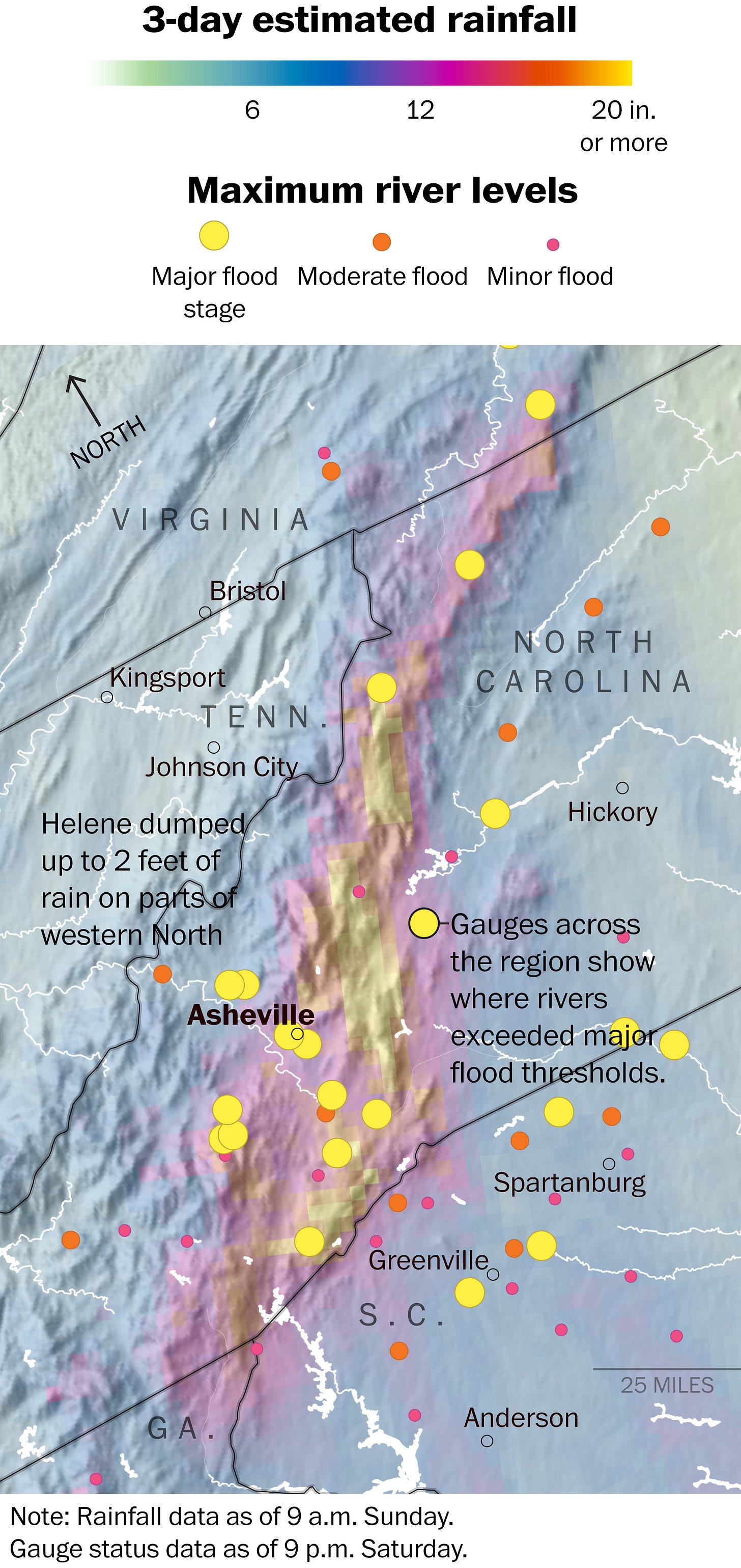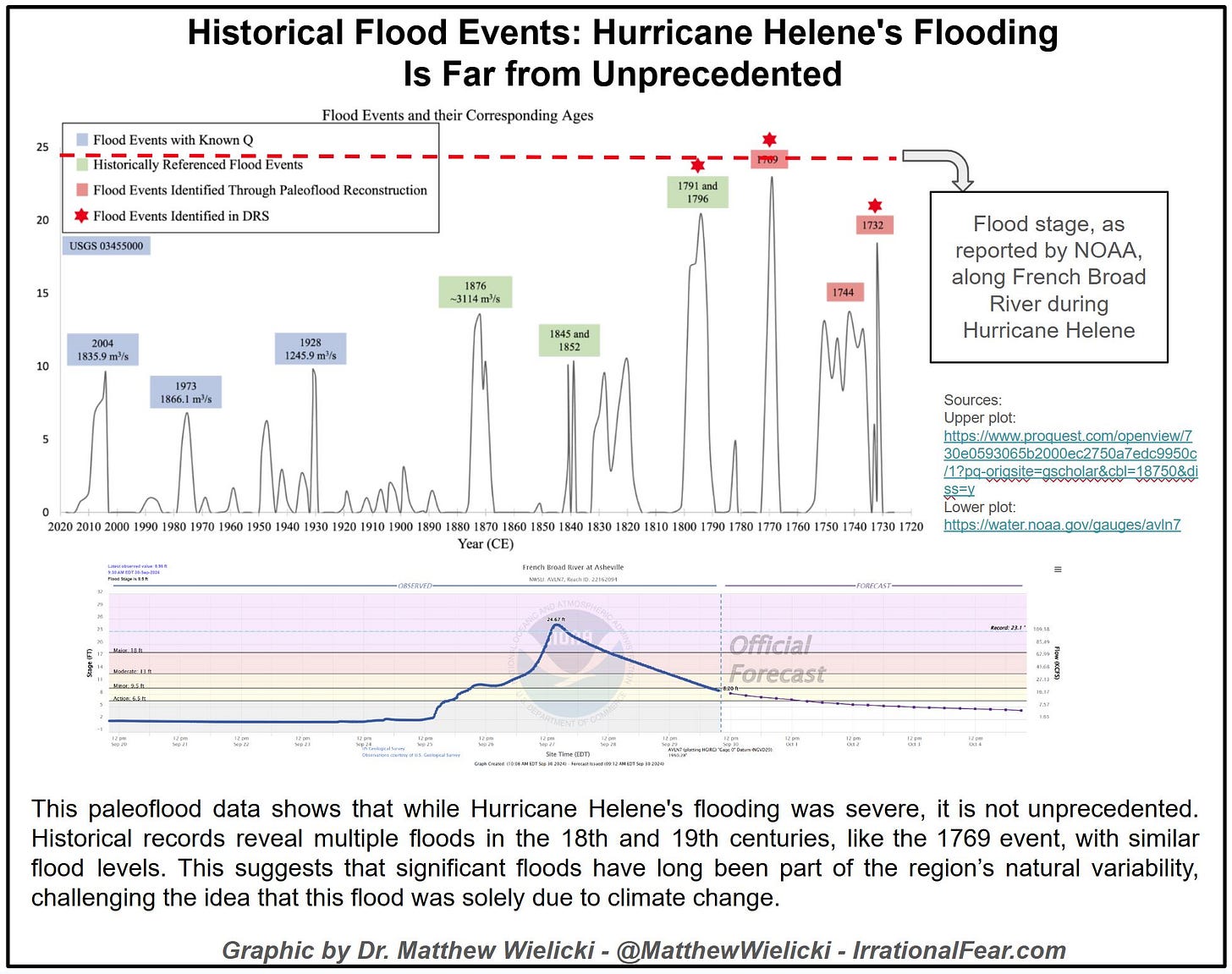Storms Don’t Care About Politics
Floods, Politics, and the Farce of “Climate Resilience” Rankings
When Hurricane Helene dumped up to two feet of rain across the Carolinas in September 2024, it left thousands of residents grappling with destruction, evacuation, and uncertainty. Streets in Asheville turned into rivers, homes were submerged, and entire neighborhoods faced devastation. But according to the Washington Post’s climate resilience rankings, Buncombe County, home to Asheville, was supposedly well-prepared to handle such disasters. Neighboring counties, however, were deemed less resilient, even as they endured similar impacts.
This disconnect between on-the-ground realities and resilience rankings raises a troubling question: Are these rankings about helping communities prepare for disasters, or are they merely political posturing disguised as science?
Resilience Rankings vs. Reality in Buncombe County
The Post’s resilience map paints Buncombe County in a favorable light, touting its ability to “rebound from adversity.” The rankings emphasize metrics like education, infrastructure spending, and life expectancy, factors that disproportionately benefit urban, Democrat-leaning areas. Yet, when Hurricane Helene struck, Buncombe County’s supposed resilience was nowhere to be found.

During the storm, Buncombe County experienced catastrophic flooding, with rivers matching major historical flood thresholds (see graphic below). In just three days, the area received up to two feet of rain, overwhelming infrastructure and forcing evacuations. The rainfall map below illustrates the intensity of the storm, which inundated urban and rural areas alike.

This wasn’t a new phenomenon for Buncombe County. Asheville has a long history of devastating floods dating back to the 18th century. Geography, not governance, is the driving factor. Steep slopes and rapid runoff make the region inherently vulnerable, a reality no amount of political spin can erase.
Neighboring Counties: Equally Wet, Less Resilient?
While Buncombe County struggled, its neighbors, like Henderson and McDowell counties, faced similar flooding risks. However, these rural, Republican-leaning areas received far lower resilience scores from the Post. Why? The rankings penalize counties for lacking urban infrastructure and higher incomes, even though these communities often employ practical, cost-effective measures to mitigate disaster risks.
Take Greenville County, South Carolina, as another example. Despite scoring lower in resilience, it faced outcomes comparable to Buncombe during Hurricane Helene. Similarly, Spartanburg County endured moderate to major flooding but, due to its rural makeup, was categorized as less resilient. The vulnerability map below highlights these discrepancies, painting rural counties in orange while urban areas like Asheville are labeled resilient.

This underscores a central flaw:
Keep reading with a 7-day free trial
Subscribe to Irrational Fear to keep reading this post and get 7 days of free access to the full post archives.




